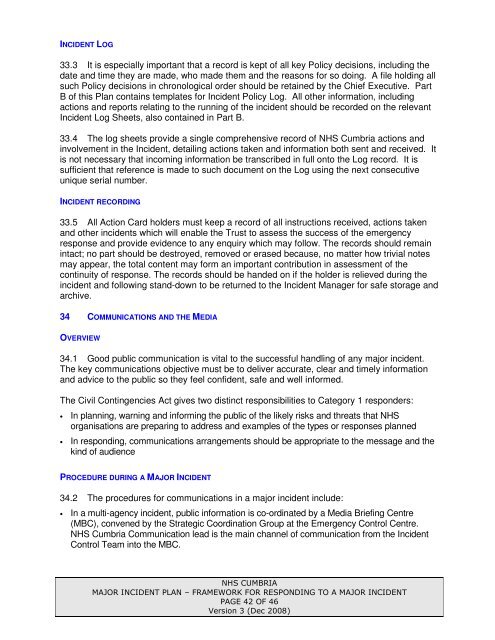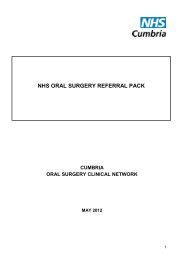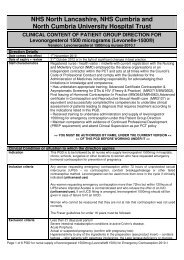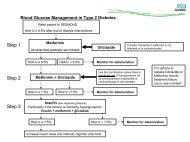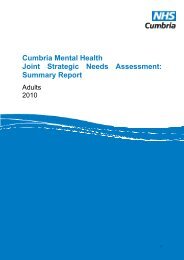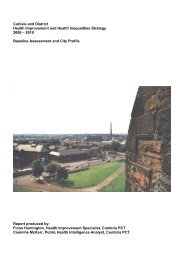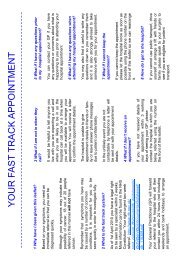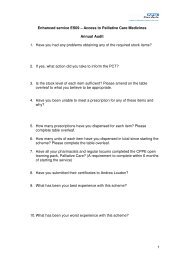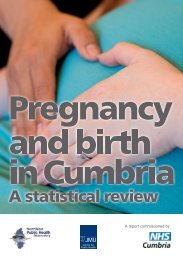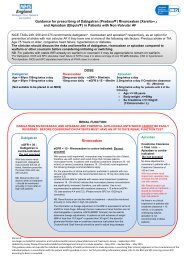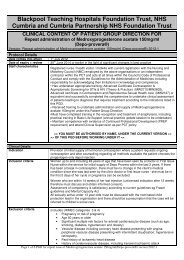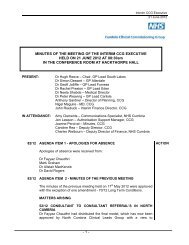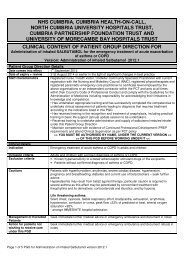MAJOR INCIDENT PLAN - NHS Cumbria
MAJOR INCIDENT PLAN - NHS Cumbria
MAJOR INCIDENT PLAN - NHS Cumbria
You also want an ePaper? Increase the reach of your titles
YUMPU automatically turns print PDFs into web optimized ePapers that Google loves.
<strong>INCIDENT</strong> LOG33.3 It is especially important that a record is kept of all key Policy decisions, including thedate and time they are made, who made them and the reasons for so doing. A file holding allsuch Policy decisions in chronological order should be retained by the Chief Executive. PartB of this Plan contains templates for Incident Policy Log. All other information, includingactions and reports relating to the running of the incident should be recorded on the relevantIncident Log Sheets, also contained in Part B.33.4 The log sheets provide a single comprehensive record of <strong>NHS</strong> <strong>Cumbria</strong> actions andinvolvement in the Incident, detailing actions taken and information both sent and received. Itis not necessary that incoming information be transcribed in full onto the Log record. It issufficient that reference is made to such document on the Log using the next consecutiveunique serial number.<strong>INCIDENT</strong> RECORDING33.5 All Action Card holders must keep a record of all instructions received, actions takenand other incidents which will enable the Trust to assess the success of the emergencyresponse and provide evidence to any enquiry which may follow. The records should remainintact; no part should be destroyed, removed or erased because, no matter how trivial notesmay appear, the total content may form an important contribution in assessment of thecontinuity of response. The records should be handed on if the holder is relieved during theincident and following stand-down to be returned to the Incident Manager for safe storage andarchive.34 COMMUNICATIONS AND THE MEDIAOVERVIEW34.1 Good public communication is vital to the successful handling of any major incident.The key communications objective must be to deliver accurate, clear and timely informationand advice to the public so they feel confident, safe and well informed.The Civil Contingencies Act gives two distinct responsibilities to Category 1 responders:• In planning, warning and informing the public of the likely risks and threats that <strong>NHS</strong>organisations are preparing to address and examples of the types or responses planned• In responding, communications arrangements should be appropriate to the message and thekind of audiencePROCEDURE DURING A <strong>MAJOR</strong> <strong>INCIDENT</strong>34.2 The procedures for communications in a major incident include:• In a multi-agency incident, public information is co-ordinated by a Media Briefing Centre(MBC), convened by the Strategic Coordination Group at the Emergency Control Centre.<strong>NHS</strong> <strong>Cumbria</strong> Communication lead is the main channel of communication from the IncidentControl Team into the MBC.<strong>NHS</strong> CUMBRIA<strong>MAJOR</strong> <strong>INCIDENT</strong> <strong>PLAN</strong> – FRAMEWORK FOR RESPONDING TO A <strong>MAJOR</strong> <strong>INCIDENT</strong>PAGE 42 OF 46Version 3 (Dec 2008)


